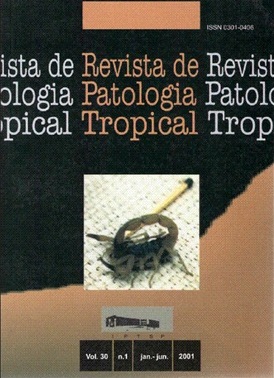Echinococcus granulosus: EVALUATION OF PROTOSCOLICIDAL ACTIVITY OF SEVERAL SUBSTANCES
DOI:
https://doi.org/10.5216/rpt.v30i1.15817Resumo
Surgical treatment of hydatid disease requires the use oi" protoscolicidal substances Io preveni secondary infection of the patients. The most comrnonly used substance ín Chile isNa Cl (20%) due to its low frequency oí' adverse effects. W e tested the protoscolicidal activity of two benzimidazole drugs, albendazole and mebendazole, currently used chemotherapy of hydatidosís disease in humans. Bovine and human protoscolices were used in the test. Vitality of protoscolices was evaluated by Evans blue vital staining. Isolated
protoscolices were exposed to several concentrations of albendazole and mebendazole lòr 10 min. Protoscolices were a!so exposed to hypertonic NaCl (20°ó) solulion for the same time. In protoscolices obtained from cattle, mebendazole at 300 |i£/ml produced lhe nighest mortalily (72.5%), followed by albendazole at 120 p-g/ml with a mortality oi" 69.5%.
Hypertonic NaCl produced a 3.8% mortality. Protoscolices obtained from two patients were less susceptible to the treatments. Mebendazole at 600 ng/ml produced a 12% mortality. and albendazole at 120 ng/ml produced the highest mortality (14%). Untreated protoscolices remained viable during the test (98 to 100%). Under these conditions, the benzoimidazolic drugs were better protoscolicidal agents than Na Cl 20% and they were also more effective on the bovine cysts protoscolex than on those isolated trom humans. Further evaluation of benzimidazoles and other protoscolicidal substances should be carried out on parasites
obtained from human patients.
Downloads
Downloads
Publicado
Como Citar
Edição
Seção
Licença
The manuscript submission must be accompanied by a letter signed by all authors stating their full name and email address, confirming that the manuscript or part of it has not been published or is under consideration for publication elsewhere, and agreeing to transfer copyright in all media and formats for Journal of Tropical Pathology.

